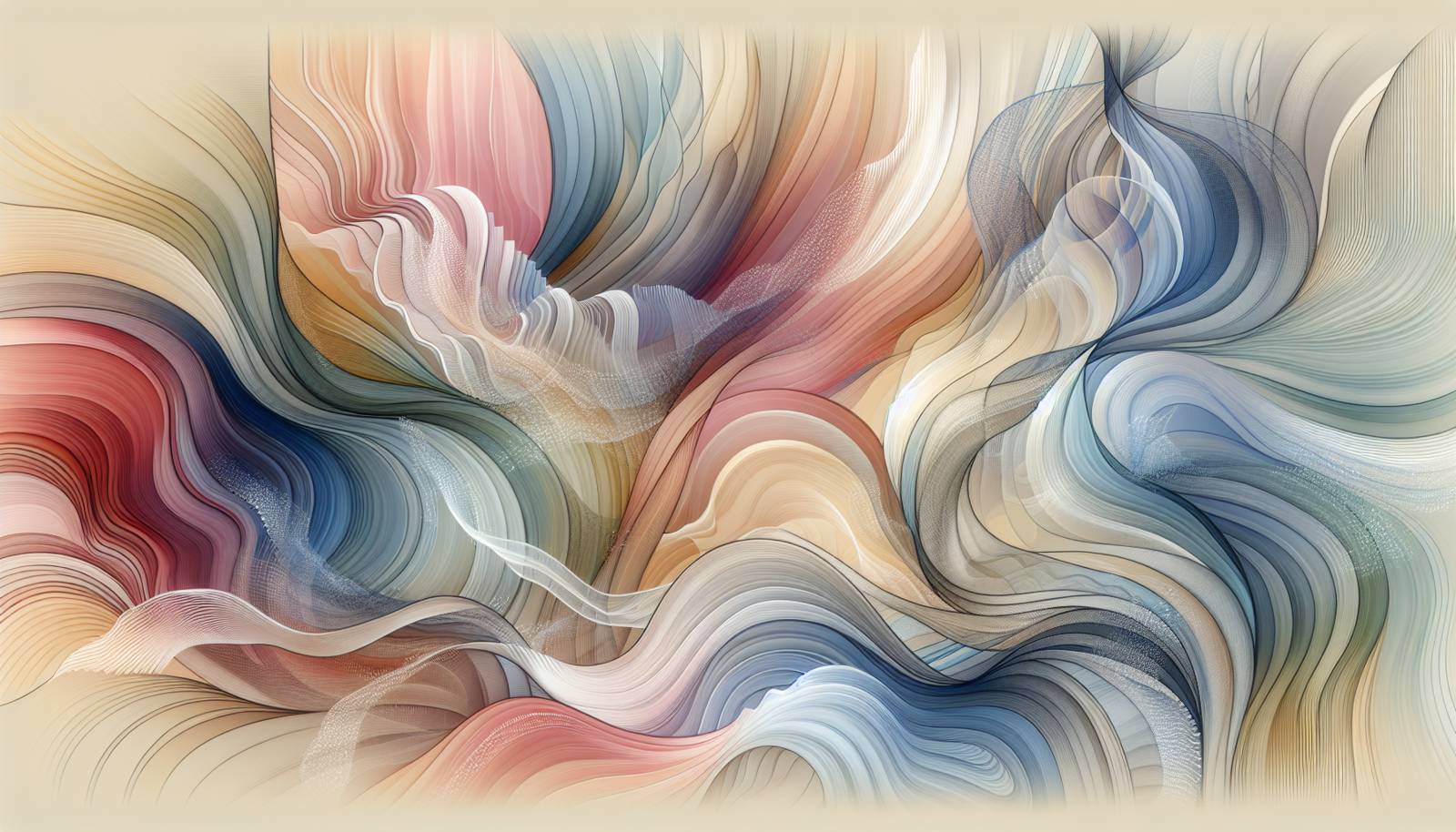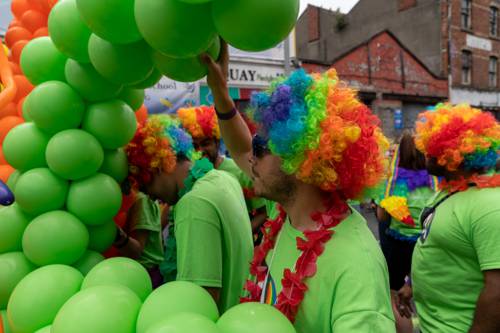
FAQ About The Influence of LGBTQ+ Ball Culture on Fashion

What is LGBTQ+ ballroom culture?
LGBTQ+ ballroom culture, also known as ball culture, is an underground LGBTQ+ subculture that originated in the United States, primarily in New York City, in the late 19th century and gained popularity during the Harlem Renaissance. It is a vibrant community centered around drag balls, where participants, known as "houses," compete in various categories, including fashion, dance, and performance. These events are spaces where LGBTQ+ individuals, particularly those from racial minorities, can express themselves freely and creatively.

How has ballroom culture influenced mainstream fashion?
Ballroom culture has significantly influenced mainstream fashion through its bold, expressive styles and emphasis on individuality and glamour. Elements such as voguing, a dance style from the balls, have been incorporated into fashion shows and editorial spreads. Designers often draw inspiration from the dramatic and avant-garde costumes seen at balls. Additionally, ballroom terminology and styles, such as 'realness' and 'executive realness,' have permeated broader fashion narratives.

Who are some notable designers influenced by ball culture?
Designers like Jean-Paul Gaultier, Alexander McQueen, and Marc Jacobs have been influenced by ball culture. Their work often reflects the bold aesthetics, theatrical presentations, and innovative cuts that are synonymous with ballroom fashion. For instance, Gaultier has cited voguing as an influence in his runway shows, and McQueen's presentations often mirrored the dramatic flair typically seen in ball performances.

What role does voguing play in the relationship between ball culture and fashion?
Voguing is a highly stylized dance form that originated in the ballrooms of New York City. It has become an iconic element of ball culture. In fashion, voguing's influence is seen in how it enhances performance art within runway shows. Designers incorporate voguing into presentations to emphasize movement and grace, merging dance and fashion into a singular art form. Events like Paris Is Burning brought voguing from the underground scene to a wider audience, increasing its impact on fashion.

Has ballroom culture contributed to fashion terminology?
Yes, ballroom culture has contributed several terms and concepts to fashion terminology. Phrases like "realness," which refers to convincingly portraying or embodying a particular identity or gender, and "shade," meaning to subtly disrespect someone, have transcended their origins to become part of broader cultural and fashion lexicons. These terms are now commonly used in mainstream fashion discourse.

What is the significance of 'houses' in ballroom culture?
In ballroom culture, 'houses' are like families or teams that offer community and support for LGBTQ+ individuals, particularly those who are marginalized or homeless. They are named often after fashion designers, reflecting a deep connection to the fashion world. Each house is led by a 'Mother' or 'Father,' and they compete in balls to earn recognition and trophies. Houses are central to the community, fostering creativity, solidarity, and a sense of belonging.

How do ball events influence fashion week presentations?
Ball events influence fashion week presentations through their emphasis on performance and theatricality. Designers incorporate elements from balls into their shows, such as elaborate staging, dramatic reveals, and a focus on individuality and personality. This crossover expects models to not just wear clothes but to embody the artistry of the designs, akin to participants in a ball. The energy and excitement of ball events provide fresh perspectives to the traditional runway format.

Can ballroom culture be seen in street fashion?
Yes, ballroom culture significantly influences street fashion through its bold and individualistic styles. The emphasis on personal expression, flamboyance, and breaking gender norms in ball culture resonates with street fashion's desire for uniqueness and self-definition. Elements like oversized accessories, eclectic color combinations, and exaggerated silhouettes seen in ball culture are mirrored in streetwear trends worldwide.

How has media exposure impacted ball culture and fashion?
Media exposure through films like Paris Is Burning and TV series such as Pose has brought ballroom culture into the mainstream spotlight, significantly impacting fashion. Such exposure has led to greater appreciation and adoption of ballroom styles within the fashion industry. Designers are more inclined to explore the vibrant aesthetics and storytelling of ball culture in their work, bridging the gap between underground culture and mainstream fashion.

What are some iconic fashion moments inspired by ball culture?
Some iconic fashion moments influenced by ball culture include Madonna's incorporation of voguing into her music video for "Vogue," which brought ballroom aesthetics to a global audience. Another is Rihanna's 2017 Crop Over Festival look, which echoed the extravagant and flamboyant costumes typically seen in balls. The use of strong silhouettes, bold colors, and elaborate decorations are examples of ball culture's mark on these moments.

Do fashion designers collaborate with ballroom icons?
Yes, many fashion designers engage with ballroom icons to infuse authenticity and creativity into their work. Collaborations often involve consulting ballroom figures on style and performance elements or featuring them in runway shows. This collaboration not only adds legitimacy and depth to the fashion pieces being showcased but also highlights the profound cultural heritage of ballroom leaders.

How does ball culture challenge traditional gender norms in fashion?
Ball culture challenges traditional gender norms by promoting fluidity and expression beyond conventional gender binaries. Participants often experiment with gender presentation through fashion and performance, blending masculine and feminine aesthetics. This approach encourages the fashion industry to explore and embrace a broader spectrum of gender expressions, diversifying how clothing can be designed and worn.

What lessons can the fashion industry learn from ballroom culture?
The fashion industry can learn to prioritize inclusivity, diversity, and self-expression from ballroom culture. Balls are platforms where marginalized voices, particularly from LGBTQ+ communities, are showcased and celebrated. Emphasizing authenticity and personal narrative, fashion can draw on these aspects to create collections that resonate with wider audiences and break away from conventional standards.

Are there any fashion collections directly inspired by ball culture?
Several fashion collections have been directly inspired by ball culture, incorporating its distinctive aesthetics into their designs. For example, Gypsy Sport's runways have famously showcased voguing performances, reflecting the dynamic spirit of ball events. Collections often utilize vibrant colors, elaborate textures, and exaggerated silhouettes reminiscent of the styles seen in ballroom competitions.

Is there a historical relationship between ballroom culture and couture fashion?
Historically, ballroom culture has maintained a complex relationship with couture fashion. While balls initially provided a space for marginalized communities to emulate and reinterpret high fashion, over time, fashion industry elites started acknowledging and drawing inspiration from these reinterpretations. This interaction highlights the reciprocal influence where couture fashion borrows from the daring creativity of ballroom culture.

How has ballroom culture affected diversity in fashion casting?
Ballroom culture has spotlighted the importance of diversity in fashion casting, pushing for representations of various gender identities, body types, and ethnicities. The visibility of diverse participants in ball culture has influenced fashion shows to embrace more inclusive casting choices, moving away from traditional norms and celebrating varied identities and appearances on global platforms.

What impact has ballroom culture had on high fashion branding?
Ballroom culture's impact on high fashion branding is seen in the adoption of its bold, inclusive, and expressive elements. Brands that align themselves with this culture advocate for diversity and authenticity, distinguishing themselves through campaigns and products that resonate with broad audiences. Moreover, the ethos of ball culture often aligns with brands seeking to modernize their image and appeal to new generations.

How does music intersect with ballroom culture and fashion?
Music plays a pivotal role in ballroom culture, providing the rhythm and energy for performances and influencing the fashion associated with balls. The beats of house, disco, and pop are integral to ball events and have influenced how fashion shows incorporate music to set the tone. Additionally, musicians inspired by ballroom culture, like Madonna and Janet Jackson, have further intertwined music, fashion, and ball culture on a global scale.

What are the challenges of mainstreaming ball culture in fashion?
One major challenge of mainstreaming ball culture in fashion is maintaining the authenticity and integrity of its origins. Once entrenched in mainstream fashion, there is a risk that the unique aspects of ballroom culture may be diluted or appropriated without proper recognition of its roots and impact on LGBTQ+ communities. It is crucial for fashion to honor and credit the influence of ballroom culture appropriately.

How do fashion magazines portray ballroom culture?
Fashion magazines often celebrate ballroom culture by highlighting its vibrant history, influential figures, and its impact on trends. They feature editorial spreads inspired by the aesthetics of ballroom fashion and dive into the culture’s depth through articles that discuss its influence. These portrayals help educate audiences about the historical and cultural significance of ball culture, though accuracy and respectful representation are essential to these narratives.
